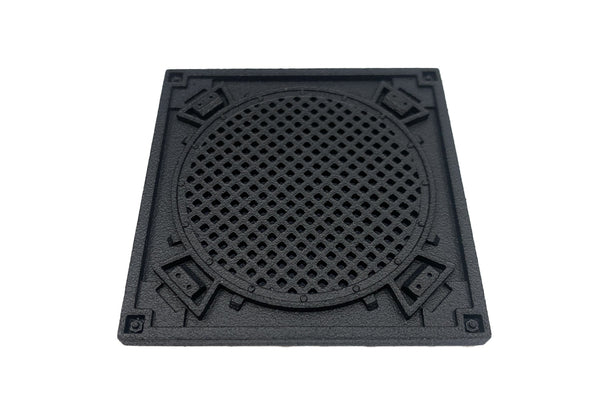Trumpeter 1:35 German Super Heavy Jagdpanzer E-100
TRU01596
Sold Out
Trumpeter 1:35 - German Super Heavy Jagdpanzer E-100 - Plastic model kit #01596
The Entwicklung series (German for "development"), shortened to E-Series, was a family of late WWII German tanks that were planned to be developed according to a standardised design. This was an attempt to stop the production of extremely complex and mechanically unreliable tanks in favour of cheaper, simpler and more efficient designs. However, the E-Series tanks featured only small modifications in armour and gun power compared to their predecessors which they were intended to replace.
The E-100 was one of the latest tanks of the E-Series. Based on the Tiger-Maus design that combined features of the Tiger II and the Maus, the E-100 prototype was constructed in 1944. However, further development was practically ended right after Hitler had issued the order to stop the Maus project.
Initially, a 75mm coaxial gun similar to the one from the Maus was meant to serve as the vehicle's armament, but later it was decided to choose a 170mm anti-tank gun in order to save more space for the crew and equipment. Another advantage of the 170mm gun was that it could shoot armour piercing projectiles at the range of up to 4 km. The speed of the tank was expected to reach 40 km/h.
Item No: 01596
Item Name: German E-100
Scale: 1:35
Item Type: Static Kit
Model Dimensions: Length: 365.19mm, Width: 127.83mm
Total Parts: 270+
Total Sprues: 7 sprues, lower hull, upper hull and rubber tracks
Paint Schemes: German Army
Release date: 2011-07
Additional:
- The kit consists of over 270 parts
- Refined detail
- Multi-slide moulded lower hull and upper hull
- Rubber tracks with fine detail
- Photo-etched parts included
Related Items
Soviet Sniper WW2 1/16th scale
£45.00 GBP
Highly detailed 1/16th or 120mm scale miniature, capturing the uniform and equipment of a WW2 Soviet Sniper. The kit comes with three head configuration options, fur hat with ear flaps known as the 'Ushanka', a head with helmet (2 parts) and a head with a cap known as the 'Pilotka'.
This is ideal for a diorama or bust depicting Soviet Snipers such as Vasily Grigoryevich Zaitsev. Between 10 October 1942 and 17 December 1942, during the Battle of Stalingrad, he killed 225 enemy soldiers. Zaitsev became a celebrated figure during the war and later a Hero of the Soviet Union, and he remains lauded for his skills as a sniper.
Operation Frankton RMBPD Set - WWII Cockle Canoe + Royal Marines
£45.00 GBP
1:35 - Major Herbert George "Blondie" Hasler - Resin kit
Herbert George "Blondie" Hasler was a Lieutenant Colonel of the Royal Marines. In 1942, a 28-year-old Hasler planned and led Operation Frankton. The operation was a commando raid on Axis shipping in the French port of Bordeaux occupied by the Germans. The mission was to attach mines to the hulls of German cargo ships. Three of the five canoes were lost on the way to the port. The surviving crewmen including Hasler reached the port successfully, placed the mines and managed to drown four cargo ships. They then walked 100 miles to a French village where they met with members of the Resistance and started their journey back to England through Spain and Gibraltar. For this operation Hasler was awarded the Distinguished Service Order by King George VI.
One kayak was damaged while being deployed from the submarine, and it and its crew therefore could not take part in the mission. Only two of the 10 men who launched from the submarine survived the raid: Hasler, and his number two in the kayak, Bill Sparks. Of the other eight, six were executed by the Germans and two died from hypothermia.
This product is available in two scales, 1:35 and 1:24 and was painstakingly designed from scratch as a digital model.
The kit includes: 2 x miniatures (Blondie Hasler and Bill Sparks) in their folding Cockle Canoe named 'Catfish' made by Campaign Models (UK).
Now available, while stocks last.
Miniature Diorama Display Base
£9.50 GBP
This highly detailed Diorama base is ideal for mounting one or two figures on display. Small enough to be displayed easily, big enough to provide enough space to set the scene. More styles coming very soon!
Dimensions: 58mm x 58mm x 4mm
1:35 Resin Miniature WWII German Soldier Eastern Front
£15.00 GBP
A detailed single (1x) resin miniature in 1:35 scale, posed to be standing while smoking a cigarette. The kit consists of the following parts:
Head/torso
Helmet
Right arm with MP40
Left arm/hand
Left leg
Right leg
M1931 Bread Bag - with M1931 Field Flask and Mess tin combined
Ammunition Pouch
Spare MP40
Sidearm in holster
























